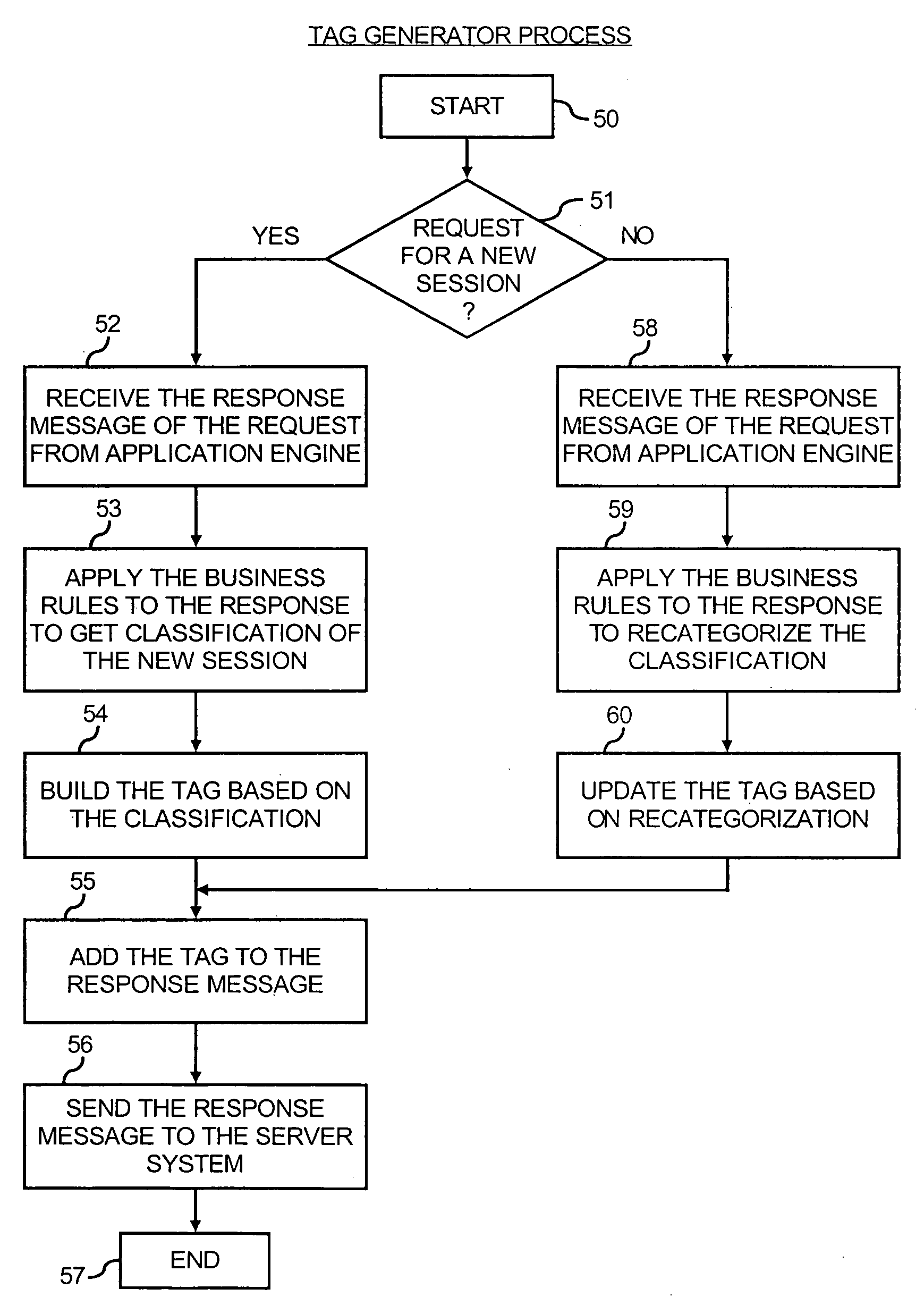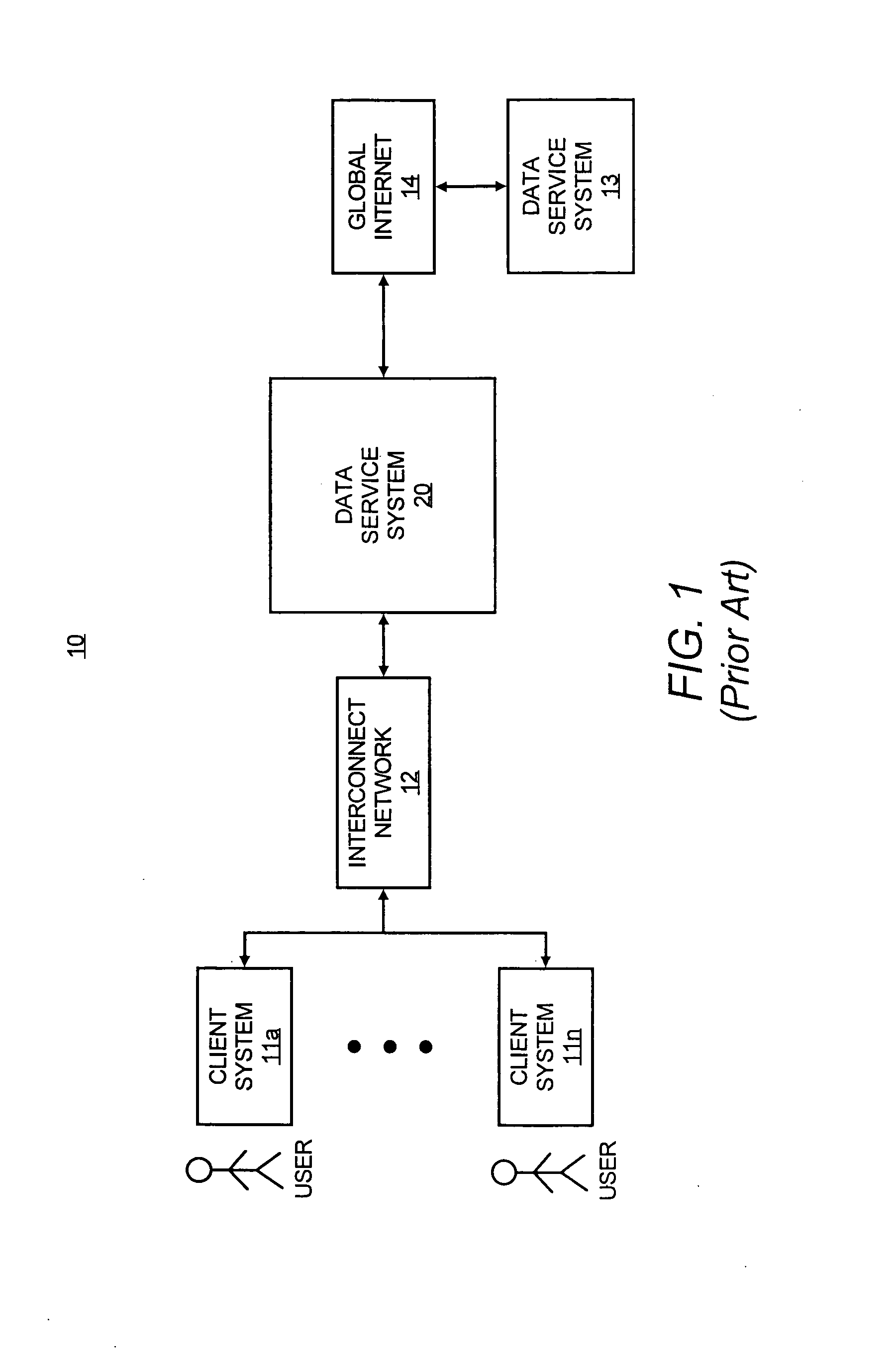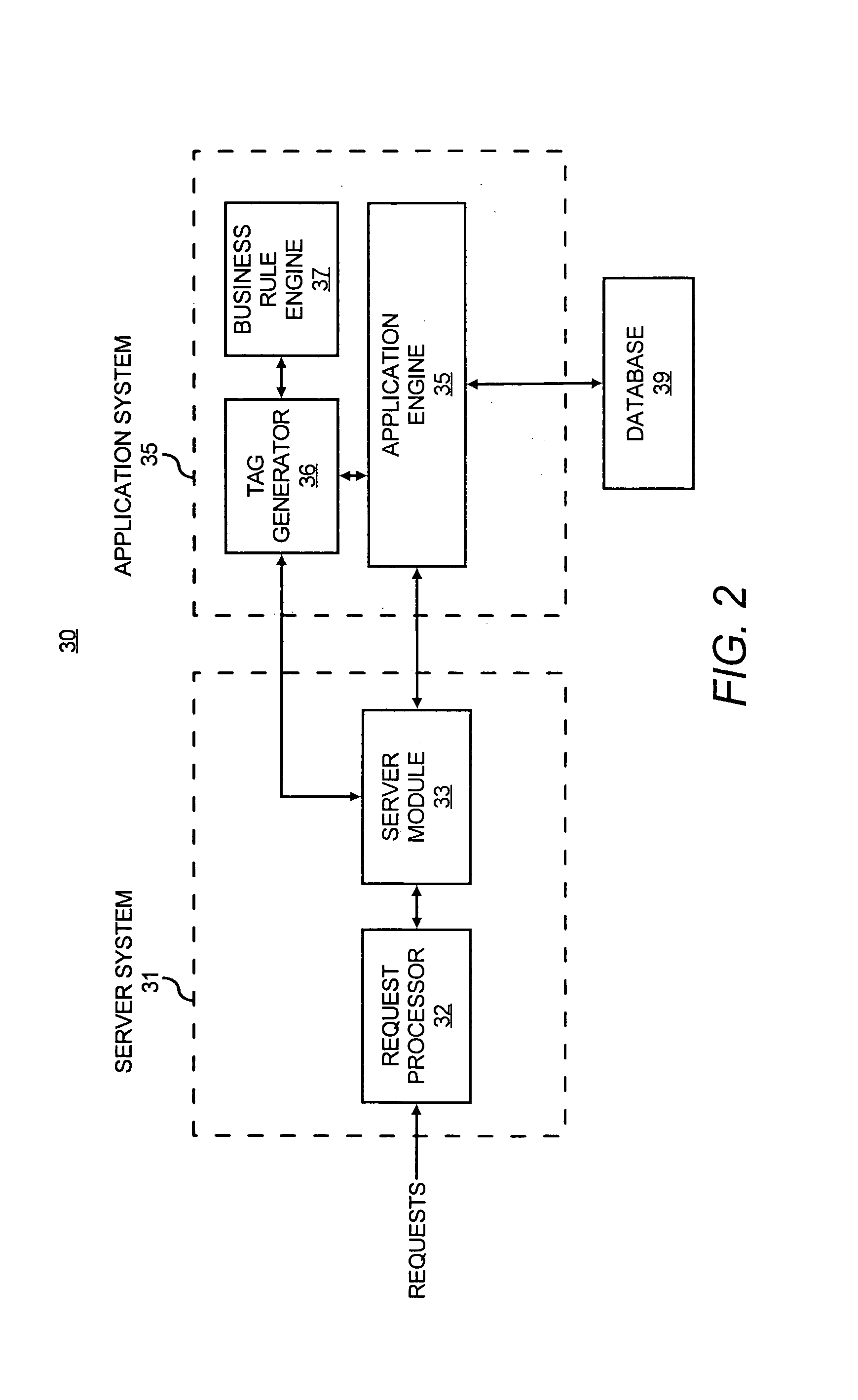Intelligently classifying and handling user requests in a data service system
a data service system and intelligent classification technology, applied in the internet field, can solve the problems of unprotected load conditions, unfavorable data quality control, and overloaded entire system, and achieve the effect of improving the performance of the data service system
- Summary
- Abstract
- Description
- Claims
- Application Information
AI Technical Summary
Benefits of technology
Problems solved by technology
Method used
Image
Examples
Embodiment Construction
[0020]FIG. 2 shows a multi-tier data service system 30 that implements one embodiment of the present invention, which will be described in more detail below. As can be seen from FIG. 2, the data service system 30 includes a front-end server system 31, an application system 35, and a database 39.
[0021]To summerize the essence of the present invention, the server system 31 includes a request processor 32 that schedules external requests to be serviced by a server module 33 of the server system 31 based on the classification information contained in a tag of each request. The external requests are generated from external requesting clients (all not shown in FIG. 2). The requesting clients are connected to the server system 31 of the data service system 30 via Internet. The communication between the requesting clients and the server system 31 employs an open standard Internet communication protocol (e.g., the HTTP protocol).
[0022]The tag contained in each request is generated from the a...
PUM
 Login to View More
Login to View More Abstract
Description
Claims
Application Information
 Login to View More
Login to View More - R&D
- Intellectual Property
- Life Sciences
- Materials
- Tech Scout
- Unparalleled Data Quality
- Higher Quality Content
- 60% Fewer Hallucinations
Browse by: Latest US Patents, China's latest patents, Technical Efficacy Thesaurus, Application Domain, Technology Topic, Popular Technical Reports.
© 2025 PatSnap. All rights reserved.Legal|Privacy policy|Modern Slavery Act Transparency Statement|Sitemap|About US| Contact US: help@patsnap.com



